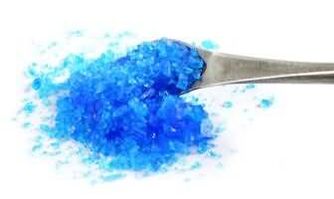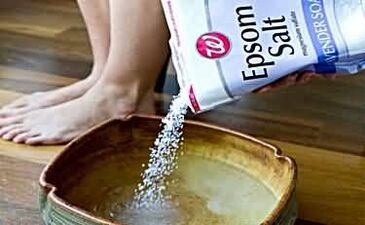Fungal diseases that affect toenails and toenails cause significant discomfort and can significantly impair a person's quality of life. In addition, nail fungus is characterized by a long and complex treatment process, when detected at a later stage.
However, it is easier and relatively simple to cope with it if you start timely treatment when the first symptoms of a fungal infection appear.Traditional medicine suggests adopting certain recipes that can solve the problem of fungus development.
Iodine protects nail health
Having a protein structure, dermatophyte fungi parasitize the nails, the skin of the feet and between the toes, and feed on the horny scales of the skin and keratin that are part of the nail plate.
Therefore, it is not surprising that the most popular remedy for treating onychomycosis at home is an alcohol solution of iodine. A solution of iodine has a detrimental effect on the structure of protein cells, destroying them, in addition, iodine is a fairly strong antiseptic and has pronounced fungicidal properties (resistance to the formation of mold).
Remember that iodine is a very active substance and if handled incorrectly it can cause some damage, such as chemical burns, etc.
The affordable price of iodine makes this drug attractive to consumers for the treatment of nail fungus, as well as for prevention purposes. It is worth remembering the rules to follow when using iodine solution for medical purposes.
Safety rules when working with iodine
- Treating the skin with iodine solution can cause irritation and allergic reactions.
reaction. Therefore, before starting to use it, examine the reaction of the skin by smearing the elbow crease area with iodine solution. - Regular use of an iodine solution strongly pigments the nail with a yellow color, which can only be gotten rid of with the growth of a new nail.
- If used incorrectly or exceeding the permitted dose, a chemical burn or inflammatory skin lesion (dermatitis) may occur.
- Only affected nails and skin areas should be treated and only at the stage of primary symptoms.
Recipes based on iodine solution
- Recipe 1. An alcoholic iodine solution (5%) is applied at the rate of one drop to each affected nail twice a day, in the morning and before bedtime, using a cotton swab for convenience. To prevent the disease, as well as for additional strengthening, the same solution, but in a lower dose, can be lubricated on healthy nail plates.
- Recipe 2. The six-week treatment is divided into three stages of fourteen days each. During the course, infected areas of the skin and nails are treated alternately: Castellani liquid during the first two weeks, iodine solution in the second stage, vinegar solution (9%) during the last two weeks.
- Recipe 3. A solution is first prepared, consisting of the following components: iodine, chloronitrophenol, vinegar essence, garlic juice, in equal parts, a teaspoon of each component. This solution should be used to treat the infected nail every day before bed. The nail must first be steamed and the softened part removed. Before use, the medicinal mixture must be shaken.
When treating nails with manicure accessories, remember: in order to avoid infection of healthy nails, the affected areas should be treated with separate tools.
Copper sulfate treatment

Copper sulfate, or copper sulfate in humans, is most often used to accompany traditional treatment of fungal infections. It comes in the form of crystals, dissolves easily in water and is non-toxic. Two forms are applicable for processing.
- Copper sulfate solution. Can be done at home. A teaspoon of copper sulfate crystals is dissolved in 1 liter of boiled water. The resulting solution is very concentrated, so it must be used in diluted form for treatment: 1 tbsp. L. solution for 1. 5 liters of water. Using this solution, take ten-minute foot baths before treating the affected areas of the skin and nails with medications recommended by the doctor.
- Copper sulfate ointment. Copper sulfate crystals are calcined on a hot surface until the color changes to gray or white. Then mix it with other ingredients: yellow sulfur, tar or goose fat, one teaspoon each. The resulting ointment is used daily to treat painful nails until completely healed.
Sea and table salt for the treatment of fungal infections

Both sea and regular salt can be added to therapeutic foot baths. At the same time, the affected areas of the skin of the foot and nails are disinfected. As a rule, these antiseptic procedures are aimed at skin infections and are necessary to prepare the nails for the subsequent application of medicinal ointments.
Salt alone is not capable of curing fungus, but it is often used as an integral part of medicinal ointments and mixtures prepared according to folk recipes.
For example, garlic water is well suited against advanced fungal infections; it is used to treat affected feet and nails twice a day. This water is easy to prepare at home. The ground garlic clove is mixed with salt until a paste is obtained. The mixture obtained is dissolved in 200 ml of water. After final cooling, dissolve another 4 tbsp. L. salt.
Unusual Uses for Regular Soda
Regular soda can be a good helper in the treatment of another type of fungus - yeast. These fungi also affect the feet, parasitizing the skin and nails. It is recommended to use baking soda in several recipes that are quite effective.
- Recipe 1. Daily use of soap and soda baths will contribute to better penetration of medicinal components contained in drugs directly into the lesions. This can often be difficult, because the affected nail is quite thick, grows quickly and acts against penetration, and soap and soda baths soften the nail plate. Mix 3 cups soda and 3 tbsp. L. grated soap, then dissolve the resulting mixture in 7-10 liters of water. Feet hover 20 minutes a day for 4 to 5 days.
- Recipe 2. A certain amount of soda is diluted with water to form a paste which is used to cover the infected nail. A few minutes after applying the soda paste to the nail, add a little lemon juice. Then the mixture is removed, the nail is washed with soap and treated with antifungal agents. This remedy is also used only as concomitant treatment.
Birch tar treatment process
Birch tar is a powerful remedy for treating all kinds of skin diseases. Therefore, you can treat your feet with natural birch tar. However, the feet are prepared in advance. The feet, steamed in hot soapy water, are subjected to further treatment: the rough, affected skin of the feet is exfoliated and the infected nails are cut off. Then the already dry skin of the feet is lubricated with birch tar applied to a cotton swab with rubbing movements. You should not wear socks or shoes for an hour and a half. Give the tar time to be absorbed into the skin.
Tar is no less effective as a treatment in ointments or mixtures. You can make your own tar ointment, with a tar content of 5-10% in the first steps. You will need a rich nourishing cream or some kind of fat. Natural tar is added to the cream and everything is mixed thoroughly. The ointment is ready to use.
Another effective option for treating fungus is sulfur tar ointment, consisting of tar, powdered sulfur, a base in the form of cream or fat - in the ratio: 3: 2: 10, respectively. Apply a thin layer of ointment to the affected areas, let it dry and stick a patch on top.
The use of tar soap is useful for the prevention of any skin disease, as it contains up to 12% pure tar and has antiseptic properties. You should opt for homemade tar soap, the usefulness of the composition of which will leave no doubt.
Celandine for clean skin
Celandine is a poisonous plant, the juice of which is successfully used against fungal and other skin diseases.
- Celandine juice. Celandine juice is used to treat diseased surfaces of the skin and nails. Freshly squeezed juice is mixed with alcohol (70%) in a 1: 1 ratio and infused over the next 24 hours. The treatment process lasts about a week, treatments are carried out regularly 3-4 times a day on previously prepared nails and feet.
- Celandine infusion. Add 100 g of dry celandine leaves to 1 liter of boiling water. After half an hour, the resulting infusion is added to the foot bath and the feet are steamed for 20 minutes a day.
- Ointment. Celandine is part of a medicinal herbal ointment to combat fungal infections. Add 5 drops of fresh celandine juice, 2 drops of oregano and 2 drops of pre-prepared calendula tincture to cooled boiled water (4 tablespoons). Treatment with such an ointment will take about 10 days, but damaged areas should be treated at least three times a day.
- Celandine oil. You can use celandine oil, sold at any pharmacy, or prepare it yourself at home, although this process is labor-intensive.

It is always better to use folk remedies for nail fungus in combination with traditional medicine - the effect will be stronger and the treatment time until complete healing will be significantly reduced.
















